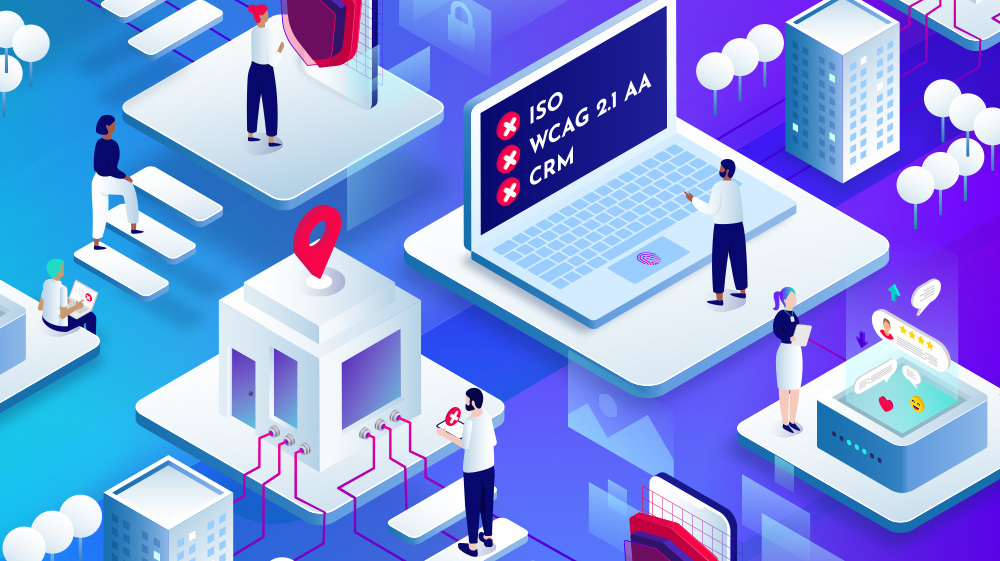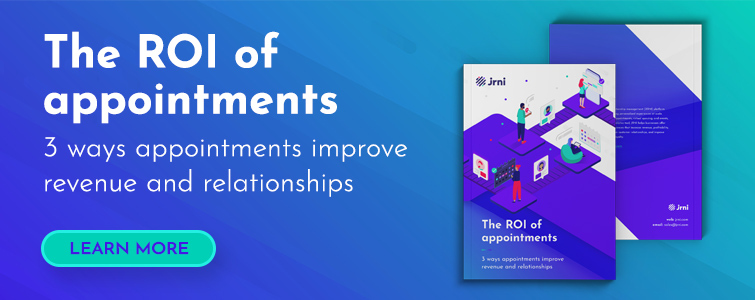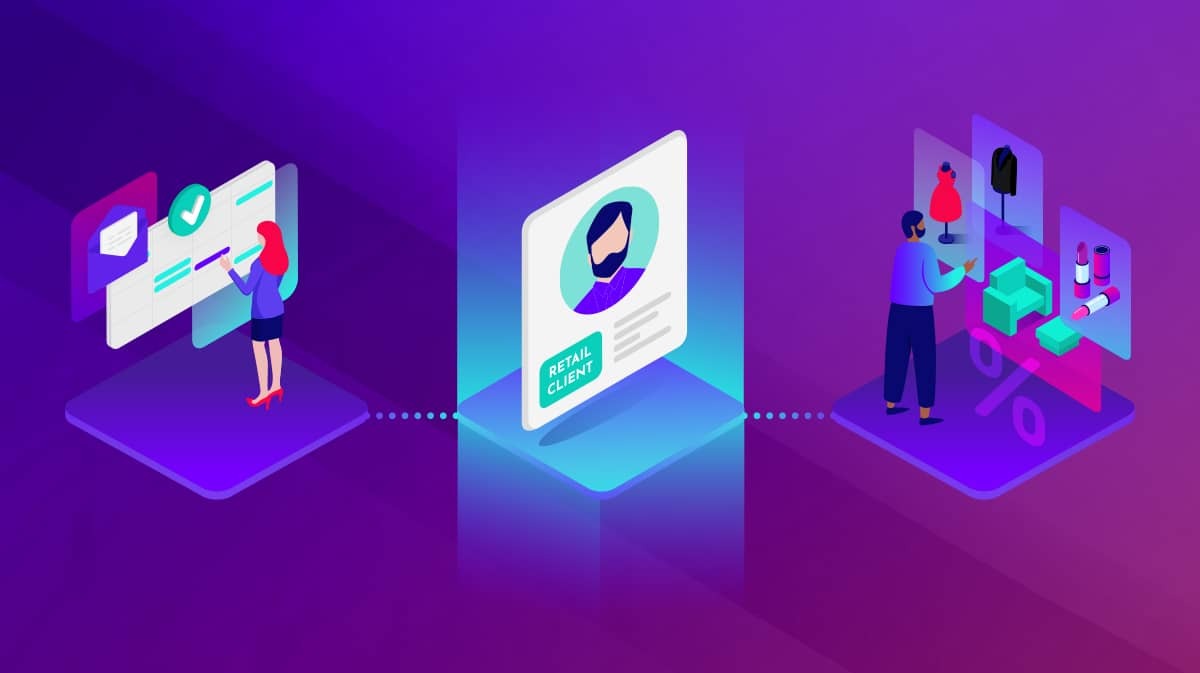The old saying, “you get what you pay for,” applies to so much in life, and appointment scheduling software is no exception.
If you’ve identified a need for scheduling software, there’s a vast array of options out there. The first consideration is whether the software is really geared toward companies like yours - for the enterprise, rather than a small business. This is often the case with several of the lower cost or free solutions, they’re built for low volume, small businesses.
The fact is, there’s a tremendous difference between enterprise appointment scheduling software and free solutions geared toward small businesses. In this article, we’ll look at the limitations of free scheduling solutions, and give you some things to look for in an enterprise-appropriate appointment scheduling software.
What even the best free appointment scheduling apps and software can’t do
With free or low-cost appointment scheduling, the best features often require a paid plan.
This is the “gotcha” for many free appointment scheduling software solutions out there. They advertise a lot of great features, but users come to find out that those features are only included with paid plans.
The free features tend to leave a lot to be desired, even for mid-sized to small businesses with multiple locations. Even with the paid features, most enterprise use cases will reach the limits of what the software can do.
For example, even well-known free scheduling software makes you pay for appointment reminders. Appointment reminders via email or SMS are crucial for preventing and reducing no-shows. They shouldn’t be seen as optional. Yet, expect to pay extra for it if you try to implement a free solution.
Let’s look at some additional reasons why free/low-cost appointment scheduling is not a viable option for enterprise use.
No buffer time between appointments
One of the biggest complaints businesses have about free scheduling software is the inability to automatically include buffer time after every appointment. For example, if a customer books an appointment for 2:00pm to 2:30pm, another customer could book one for 2:30pm to 3:00pm.
That leaves your staff no time to prepare for the second customer, and it leaves no room for the first appointment to go a bit over if needed.
No in-depth analytics
Most free or cheap appointment scheduling solutions come with very basic analytics that tell you the times you booked appointments, the customer’s name, email, phone number, etc.
The free version of these platforms offer little in the way of tracking capacity, time management, ROI, conversions, revenue, seasonal trends, and so on. These sorts of insights are vital for making changes to your appointment program and improving your level of service. They aren’t optional for enterprises that want to develop a robust program around appointments.
No personalized branding or white-labeling
As part of an omnichannel experience, appointments are the glue between digital and physical channels. Customers expect a seamless and consistent experience across touchpoints, and that includes how your brand presents itself.
Most free or low-cost appointment software doesn’t allow white-labeling or personalized branding. That means that your customers are browsing your site, clicking to book an appointment, and getting taken out of the experience you’ve built for them. They’re brought to a page that doesn’t look and feel like your brand.
Even worse is that free solutions often offer little to nothing in the way of customizing the booking experience.
Limited functionality for integrations
As we mentioned, appointments affect several areas of your business. Marketing teams can use a CRM-appointment scheduling integration to build email list segments based on purchase history and interests. Fulfillment teams need to be able to track orders made during or after appointments. Sales staff need to see real-time calendar updates for their appointments.
Some free scheduling apps and software can integrate with CRM, email, and calendar solutions, but many cannot. You would ultimately have to handle large volumes of manual data entry to get your appointment data to the relevant teams and stakeholders.
Little to no customer support
This is truly where you feel that you’re getting what you paid for. Most free solutions offer chat or email support, but you certainly won’t have a dedicated customer success representative or account manager as your go-to person for support and implementation needs. You’re on your own for the most part.
The free software becomes more expensive if you have to hire developers to deploy and implement the software.
Why enterprises need true enterprise-level appointment scheduling software
Appointments aren’t something you just add on and continue with business as usual. Done correctly, they have a major influence on multiple areas of your business, ranging from store operations to marketing and IT. It’s clear that enterprises with complex needs and multiple stakeholders aren’t going to get what they need out of simple, free software.
A recent study from Forrester Consulting looked at the Total Economic Impact™ of using JRNI. The researchers tracked results for a major enterprise with over $3 billion in revenue and 200+ locations. The results over three years include:
- 60% annual increase in appointment volume
- $3.1 million in increased profit from appointments
- 143% ROI
That’s why you can’t leave your appointments to chance with free software that wasn’t built for the scale of an enterprise.
It’s worth understanding why top enterprises in the retail and banking industries use appointment scheduling software to enhance their omnichannel experiences and manage appointments at scale.

Robust business-side functionality
Enterprises need feature-rich appointment scheduling software that is geared toward modern use cases, can handle the complexity of larger organizations, and has the ability to easily scale up as your business grows. Some key features include:
- Single sign-on. Single sign-on enables staff to use their existing authentication credentials to log in. Business users don’t need separate keys to log into the appointments dashboard and check their schedule, make changes, etc.
- Multiple meeting types. Most free scheduling solutions allow users to book a one-size-fits-all appointment. Enterprises need a scheduling solution that offers multiple appointment types across departments and according to staff expertise. For example, a customer going to a bank to open an account shouldn’t meet with a mortgage expert. Multimodal appointments get customers to the right person every time.
- Built-in buffer time. Staff shouldn’t be booked for back-to-back meetings. That negatively impacts the customer experience because staff have less time to prepare for upcoming meetings if they have to jump from one to another. An enterprise solution will build in buffer time to ensure staff have adequate time to prepare, take a break, etc.
- Post-appointment notes. Customers who book recurring appointments don’t want to come in and have to start from scratch with every meeting. Scheduling software should allow your staff to save notes on each appointment so customer records are accessible. This is how you build strong relationships over time. Additionally, if a returning customer has to book an appointment with a new staff member, the interaction doesn’t have to start from scratch.
- Analytics. Enterprise appointment solutions should come packed with analytics that give staff, managers, and executive teams insight into how appointments are impacting revenue. Tracking conversion rates, basket sizes, trends, capacity, and other business-critical metrics are not nice-to-haves. They are meets-minimum requirements for enterprises that want appointments to be an effective growth channel.
- Tailored branding. Enterprise solutions should always allow you to white-label your appointment booking experience. Your brand is a key asset, and it should be reflected everywhere customers interact with you. Additionally, moving seamlessly between digital and physical channels - which appointment scheduling allows customers to do - means eliminating confusion and inconsistency as much as possible.
Must-have customer-side features
Enterprise appointment software should include features that make customers’ lives easier and allow them to interact with you on their terms. Here’s what you should look for.
- Easy rescheduling. Consumers expect lots of flexibility to shop on their own terms. That means they may need to reschedule or cancel their appointments sometimes. The software should make it simple for the customer to find a new time slot without having to call and reschedule.
- Appointment reminders. To reduce no-shows and ensure customers are on time and in the right place for their appointments, scheduling software should offer text message and email reminders.
- Multi-appointment booking. Customers who want to set up repeat appointments or schedule multiple appointments for different needs should be able to easily do so.
Integrations
At the enterprise level, appointment scheduling software doesn’t stand alone in your customer experience tech stack. It must integrate with email systems, CRM software, calendars, call centers, video conferencing, etc.
To get the most out of your appointment program, you need to have all of the moving parts working seamlessly and with minimal manual data entry. Enterprise appointment software can be customized to integrate with your existing tech stack, and you’ll be able to work with an expert implementation team to deploy the software, rather than have to build systems around the limitations of free software.

Security
Enterprise security standards are strict, and failure to protect customer data can lead to major lawsuits and years of bad press.
Your appointment scheduling software vendor should, at a minimum, be PCI and GDPR compliant. If your organization deals with extremely sensitive data, you may even want to consider a solution that is ISO27001 compliant as well. While some free tools may be compliant to one of these standards, all of them are relevant for enterprises that handle customer data.
Accessibility
Any appointment platform needs to be committed to delivering an inclusive user experience that makes accessibility a priority. In the case of banking, accessibility isn’t an option according to Essential Accessibility. Banks must be ADA-compliant or they risk fines.
Even for retailers, there is a history of successful lawsuits against retailers who fail to meet ADA standards for accessibility, according to the Bureau of Internet Accessibility.
An enterprise appointment scheduling solution should be compliant with the Web Content Accessibility Guidelines (WCAG), version 2.1 AA. This standard lays out a wide range of recommendations for making content accessible to people with visual, auditory, physical, speech, cognitive, language, and other disabilities.
Accessibility isn’t just about avoiding lawsuits. It’s a part of running an ethical and inclusive business that can serve customers regardless of their abilities.
Free or cheap appointment scheduling software might look appealing based on the price tag and simplicity. Once you look a bit deeper, however, you’ll notice that they lack the flexibility and features to provide a truly enterprise-level experience. If you’re serious about using appointments as a way to grow revenue, you’ll need to find solutions that are purpose-built for your use cases.
Learn more about how appointment scheduling drives value by downloading "The ROI of appointments".




